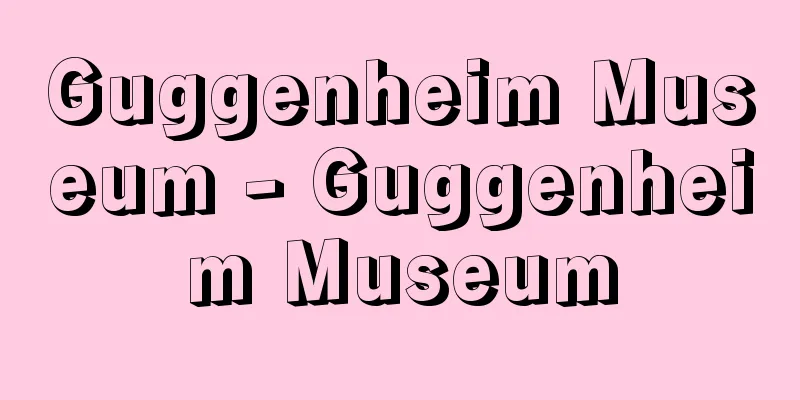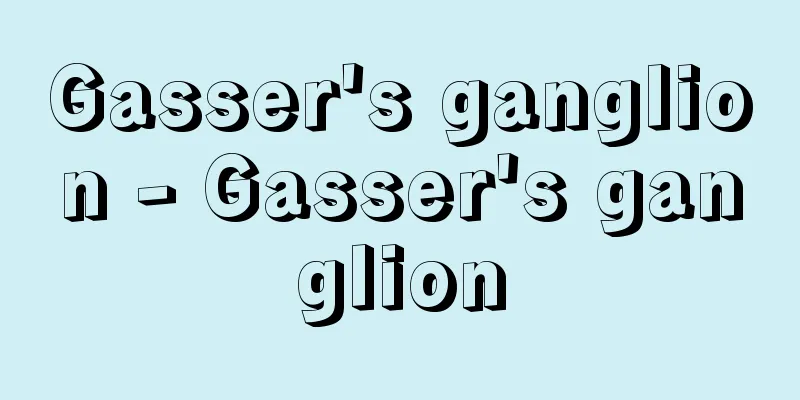Guggenheim Museum - Guggenheim Museum

|
This art museum is located at the northern end of the so-called "Museum Mile" on Fifth Avenue, which runs along the east side of Central Park in New York. It was opened in 1937 by Solomon Robert Guggenheim (1861-1949) as a museum of non-objective painting to house his own collection, but in 1943, design work began on a new building called the Guggenheim Museum, which was completed in 1959. It is one of Frank Lloyd Wright's (1869-1959) masterpieces. In addition to the permanent exhibition, which focuses on 20th century abstract art, including collections by Kandinsky and Brancusi, various special exhibitions are also held. Needless to say, Wright was one of the leading architects of the 20th century, active for about 70 years from the 1880s to the end of the 1950s, and his name remains in architectural history as the designer of private homes known as prairie homes. However, he also left behind many important works in public buildings, and the Guggenheim Museum is one of the classic examples. The greatest architectural feature of this museum is its "spiral" structure. The idea of the "spiral" structure itself can be traced back to the 1925 plan for the G. Strong Planetarium by the same Wright, which was conceived as a complex facility mainly consisting of an observation deck and parking lot, with a spiral ramp leading to the top used as parking space. However, at the Guggenheim Museum, this car ramp has been transformed into a spiraling exhibition space that descends from the wall using cantilevers (beams with one free end and the other fixed), and combined with the lighting method from a dome-shaped skylight, it creates an extremely impressive viewing space. The innovative design, in which poured concrete forms a seamless, flowing spiral, is a large-scale and concrete demonstration of the possibility of design that is completely free from conventional structural systems. Furthermore, the Guggenheim Museum is a monumental building that has had a major impact on subsequent architecture in that it is a reinforced concrete structure that tightly integrates structural, formative, and spatial concepts. This is why it is considered one of Wright's most important examples of his later architecture. In 1969, Solomon's niece, Peggy Guggenheim (1898-1979), who was also a supporter of avant-garde art, donated most of her collection to the Guggenheim Museum, further expanding the collection. [Hiroshi Murata] The Guggenheim Museum has also expanded beyond New York, opening the Peggy Guggenheim Collection in Venice, Italy in 1980, the Guggenheim Museum Bilbao in Bilbao, Spain in 1997, and the Deutsche Guggenheim in Berlin, Germany in the same year. It also opened the Guggenheim Hermitage Museum in Las Vegas from 2001 to 2008. [Editorial Department] [References] | | | |Source: Shogakukan Encyclopedia Nipponica About Encyclopedia Nipponica Information | Legend |
|
ニューヨークのセントラル・パークの東沿いを走る、五番街のいわゆる「ミュージアム・マイル」の北端に位置する美術館。1937年ソロモン・ロバート・グッゲンハイムSolomon Robert Guggenheim(1861―1949)が自分のコレクションを収めるために非対象絵画non-objective painting美術館として開設したが、その後43年にグッゲンハイム美術館の名称で新たに設計が開始され、59年に完成をみた建築で、フランク・ロイド・ライト(1869―1959)の代表作の一つである。カンディンスキー、ブランクーシのコレクションなど、20世紀の抽象美術を中心とした常設展示のほか、さまざまな企画展示も開かれている。 ライトは、いうまでもなく、1880年代から1950年代末まで、約70年にわたって活動を続けた20世紀の代表的建築家の一人であり、いわゆるプレーリー(草原)住宅とよばれる個人住宅の設計者として建築史にその名をとどめている。とはいえ、公共建築においても多くの重要な仕事を残しており、グッゲンハイム美術館は、その典型的作例の一つに数えられる。この美術館の最大の建築的特徴は、「螺旋(らせん)」構造にあるといえよう。「螺旋」構造そのものは、同じライトによる1925年のG・ストロング・プラネタリウムの計画案にまでさかのぼりうる着想で、展望台と駐車場を主体とする複合施設として構想されたその計画案では、頂上まで続く螺旋状の斜路が駐車スペースにあてられていた。ところが、グッゲンハイム美術館では、この自動車のための斜路が、キャンティレバー(一端が自由端、他方が固定端で構成された梁(はり))によって壁体から張り出された螺旋状に下降する展示空間に変貌し、ドーム状のトップライト(天窓)から採光が行われる手法と相まって、きわめて印象深い鑑賞空間を生み出している。注入されたコンクリートが、継ぎ目なく流れるように螺旋を形成してゆく斬新(ざんしん)なデザインは、従来の構造システムから完全に自由な設計の可能性を大規模かつ具体的に提示したものである。さらに構造的、造形的、空間的な理念を緊密に統合した鉄筋コンクリートの造形という点で、グッゲンハイム美術館は、その後の建築に大きな示唆を与える記念碑的な建物となった。ライトの後期建築のなかでももっとも重要な作例の一つとされるゆえんである。 1969年にソロモンと同じく前衛美術の支援者であった姪(めい)のペギー・グッゲンハイムPeggy Guggenheim(1898―1979)が彼女のコレクションの大半をグッゲンハイム美術館に寄贈したために収蔵品が充実した。 [村田 宏] グッゲンハイム美術館は、ニューヨーク以外でも事業の展開をはかっていて、1980年にイタリアのベネチアでペギー・グッゲンハイム・コレクション、97年にスペインのビルバオでグッゲンハイム美術館ビルバオ、同年にドイツのベルリンでドイチェ・グッゲンハイムをそれぞれ開館している。また、2001年から08年までラスベガスにおいてグッゲンハイム・エルミタージュ美術館を開いていた。 [編集部] [参照項目] | | | |出典 小学館 日本大百科全書(ニッポニカ)日本大百科全書(ニッポニカ)について 情報 | 凡例 |
Recommend
Compensation for damages - Songaibaisho
It refers to the right of a person who has caused...
King Ikeda
Years of birth: Years of birth and death unknown. ...
Credit Mobilier (English name) Société Générale de Credit Mobilier
A stock investment bank founded in Paris in 1852 b...
Sampan - Sanpan (English spelling)
Originally, it was a small wooden flat-bottomed b...
Slave Coast - Doreikaigan (English spelling) Slave Coast
The coastal region facing the Gulf of Guinea in W...
Liège - Liege (English spelling)
The capital of the Liège province in eastern Belg...
Society for the Propagation of the Gospel in foreign parts
...The seemingly stable Church of England system ...
Aeroallergens
...The nasal mucosa becomes edematously swollen b...
Seiche
…When a large earthquake occurs, the water in a l...
Weizsacker, CFvon (English spelling) WeizsackerCFvon
...In the 20th century, two new physics theories,...
Hypoglossal nerve
The 12th cranial nerve is a purely motor nerve th...
Baseball - yakyu (English spelling) baseball
It is a team sport and a ball game. Baseball orig...
Bottom sediment
The characteristics of the bottom of the water. It...
Quasi-appeal - quasi-appeal
This refers to an appeal against a trial or a dec...
Shimotsukeno Komaro
?-710 * An official in the Asuka period. He playe...









